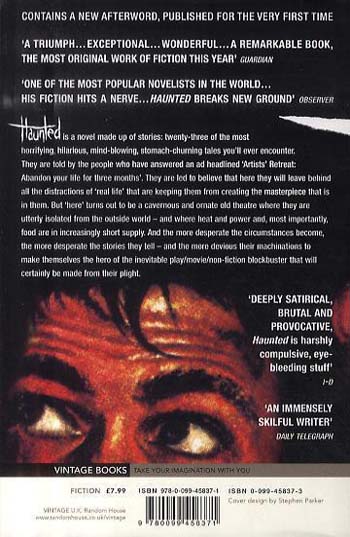

The bus deposits everyone at an empty building, an abandoned theatre. It turns out they know as little as anyone else about what is to happen, but they have at least been entrusted with a few practical arrangements. All are grotesques, all are writers (not usually the same thing), and all have responded to an advertisement offering three months of seclusion in a writers' retreat: "Abandon Your Life for Three Months".Īlready on the bus are three people who seem to know what's going on: a prematurely elderly disabled teenager in a wheelchair, a buxom Mrs Clark, and the driver, Saint Gut-Free. Almost none of them is named, but they are stereotyped with a label: Miss America, Comrade Snarky, Agent Tattletale, Duke of Vandals, Chef Assassin, and so on. The narrator becomes an accomplice to them, but because of the first-person voice, so too does the reader.Ī bus tours the empty pre-dawn streets of an unnamed city, halting to pick up one passenger after another. The style is the book, and it is a substantial constituent of the appalling events that are described throughout the novel. This innovative approach is not a gimmick. The narrator does not exist as a character as such in the story: the novel is written jointly by everyone in it, and yet as a result of some sleight of hand I could not discern, it is also by none of them. The narrative voice, written in Palahniuk's distinctively flat and declarative language, is a collective one. It is written with such deftness that it takes many pages before the reader realises what's going on. The book is told in the first person plural, but unobtrusively.


The formal shape of the narrative is just as unusual. At least one of the stories can be seen as a stand-alone work (more on this later), but none the less this is a unitary novel of exceptional originality. Although superficially it might appear to be a fix-up (a collection of individual stories welded together in an attempt to make them seem like a novel), in fact the stories in this case are the novel. These are linked by short pieces of narrative. Haunted takes the form of 23 short stories, each introduced by a poem identifying the purported writer of the story that then follows.


 0 kommentar(er)
0 kommentar(er)
